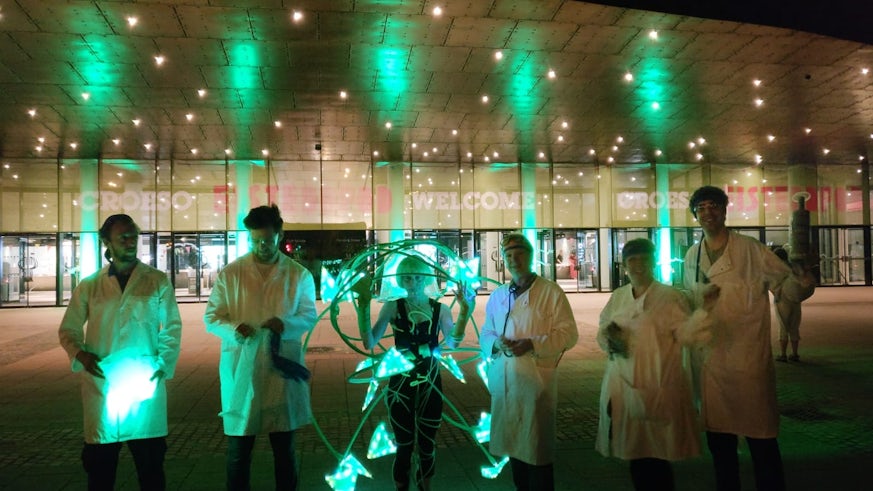Cardiff School of Pharmacy bring science education to the National Eisteddfod of Wales
25 Awst 2018

Cardiff School of Pharmacy brought together scientists from a number of Cardiff University schools at the National Eisteddfod of Wales to provide the public with a scientific and educational extravaganza.
Professor Arwyn Jones is a champion of public engagement in science and co-ordinated the events under the umbrella of The Science of The Sea. This to celebrate the Year of the Sea in Wales, marine research performed at Cardiff University, and the location of the Eisteddfod in Cardiff Bay. The nucleus was a large science pavilion housing numerous highly interactive activities and extended from there to include a collaboration between Cardiff University RSPB, who organised guided wildlife walks to highlight the diversity of flora and fauna found in the Bay area. Also present was the Cardiff University research vessel, Guiding Light, which was moored in the Bay to showcase the research technologies.

The week kicked off with Carnifal y Môr (Carnival of the Sea), a collaboration between artist Megan Broadmeadow, Butetown Carnival, the School of Pharmacy, and songwriter Gruff Rhys of the Super Furry Animals, who wrote the music. During the parade, staff from the School of Pharmacy dressed as jellyfish and laboratory scientists, whilst Post Doctoral Research Associate Jennifer Wymant wore a specially designed costume representing GFP (Green Fluorescent Protein). The team were there to demonstrate how identification of a fluorescent protein from a jellyfish has illuminated the inside of our cells. This has transformed our ability to understand how cells and the body works. The parade culminated in a spectacular light show across the Bay, projecting film on to walls of water.
The science pavilion was a hotbed of activity with scientists from Pharmacy, Bioscience, Earth Science and Engineering interacting with thousands of public attendees from all over the world. In Medicines of the Sea, a team of fifty volunteers from across these Schools explained, through a fishing game, how chemical compounds from sea creatures can be developed to produce new medicines. For example, from the sponge Tectitethya crypta, scientists have developed drugs to treat HIV, cancer and cold sores.
There were also exhibits on invasive species that are harming our coastal ecology, such as a Pembroke Dock limpet that came to our shores on American ships during the Second World War. Researchers at Cardiff University are hoping this slipper limpet will provide us with new material for tissue regeneration. As well as this there were activities highlighting the importance of saltwater marshes, right through to another mollusc that has the claim of being longest living animal on earth.
The Carnival, Science pavilion and the other activities proved to be a huge success with people of all ages, from young children, to Welsh AMs, to people who had graduated from the School of Pharmacy itself in 1964, like Dr Margaret Roberts, who introduced herself to the team during the events.
Prof. Arwyn Jones said of the science activities at the Eisteddfod, “The success of this week was due to the fact that I had an amazing team of scientists working on the exhibits. Their enthusiasm and ability to discuss complex science in layman terms was highly appreciated by the public. This was in many ways a unique Eisteddfod that showcased Welsh Culture to the public from Wales and the world, and highlighted the fact that Science and Culture are one and the same."